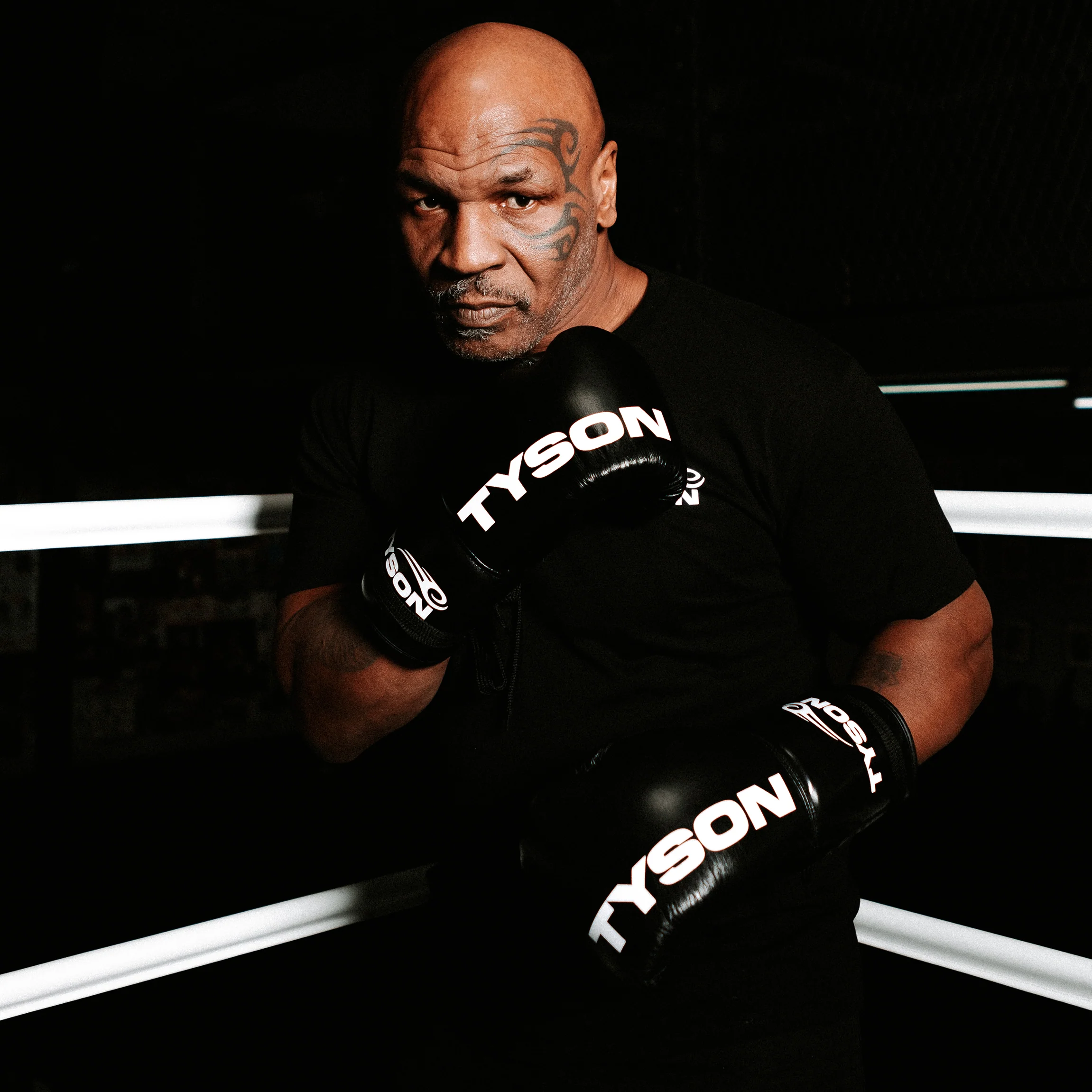
Mike Tyson is without a doubt a boxing’s most controversial figure. Tyson – an iron-willed, unwavering knockout artist – won the WBC heavyweight title in 1986 at the tender age of 20, the youngest heavyweight champion of the world, and fans love him because of his devastating punching power, bad boy image and overwhelming rise to dynasty. His journey from poor youth to worldwide fame is still a story of success, hardship and overcoming the odds.
Early Life and Background
Michael Gerard Tyson was born on June 30, 1966 in Brooklyn, New York, into a family plagued with financial adversity and instability. His childhood was marred by parental death, poverty and street violence - experiences that will come to rule his life. Despite the hardships, Tyson discovered a love for boxing that forever changed the direction of his life.
| Detail | Information |
| Full Name | Michael Gerard Tyson |
| Date of Birth | June 30, 1966 |
| Place of Birth | Brooklyn, New York, USA |
| Nationality | American |
| Nicknames | “Iron Mike”, “Kid Dynamite”, “The Baddest Man on the Planet” |
Childhood and Family Influence
Tyson was brought up in the affluent Bedford-Stuyvesant and Brownsville neighborhoods of Brooklyn. His mother, Lorna Tyson, had difficulty raising Mike and his siblings on her own after his father, Jimmy Kirkpatrick, abandoned the family when Mike was a child. Tyson, left to raise himself without a stable home, was a street kid, a gang member, in petty theft and crime. The pugnacious instincts that he formed early in these encounters toughened him.
Introduction to Boxing
The life went further to hell when Tyson was landed in the Tryon School for Boys, a house of very bad boys in upstate New York. One day a counselor and former boxer named Bobby Stewart, noticing Tyson’s natural ability at the center, took him to the storied trainer Cus D’Amato. A mentor and father figure, D’Amato would teach and mold Tyson into the fighter he was supposed to be. D’Amato guided him from a troubled youth to a man with purpose, and with the championship in his sight.
Transition to Professional Boxing
Mike Tyson had a remarkable opening to his career as a professional boxer. The pro ring was wielded with what Tyson had to offer after years of intense grooming by the watchful D’Amato. Even for a seasoned combatant, he was abnormally nimble, fleet-footed and had received a thorough education in the martial arts. He battled from his soul, as well as from a high ring IQ sharpened by some of the most golden names in boxing as he rose the ranks.

By the time Tyson turned pro, he was already a seasoned amateur. He was spoken of within boxing as if he were already one of the greats, his bull strength and brawler’s style conversationally measured favorably alongside heavyweight legends. His hunger and intensity lit up the sport when he entered it as a professional.
First Professional Fights
Mike Tyson’s professional debut took place on March 6, 1985, against Hector Mercedes in Albany, New York. The fight ended quickly—Tyson delivered a first-round technical knockout, showcasing his signature power and precision. It wasn’t just a win; it was a statement. Tyson had arrived, and he wasn’t wasting any time.
Over the course of the next twelve months, Tyson kept an astonishingly busy schedule. In an era when most fighters had a handful of bouts per year, Tyson fought 15 times in 1985 alone, winning all 15 fights, with 11 knockouts in the first round. His style was ruthless and efficient—he moved forward with relentless pressure, throwing devastating combinations that left opponents stunned or unconscious. Each fight seemed like a replay of the last: Tyson stormed out of his corner, launched a storm of punches, and ended things before his opponent could even warm up.

Key highlights from Tyson’s early fight record:
- 15 professional fights in a single year (1985)
- 15 wins, 11 by first-round knockout
- Total dominance from opening bell to finish
- Explosive combinations and aggressive ring control
Tyson’s quick rise through the ranks wasn’t just about spectacle. These early fights were carefully chosen by his management to build experience while generating public interest. Despite the short duration of most matches, each one added to Tyson’s growing mystique. Audiences packed venues to witness the phenomenon for themselves. Promoters saw gold in his fists. The sport had a new star, and he was just getting started.
Early Career in New York
New York played a vital role in shaping Tyson’s early professional identity. The state’s boxing scene was thriving, and Tyson’s matches quickly became must-see events. From venues like the Felt Forum at Madison Square Garden to smaller regional arenas in upstate New York, Tyson’s performances were drawing bigger and more enthusiastic crowds with each fight. He wasn’t just a rising boxer—he was becoming a local legend.
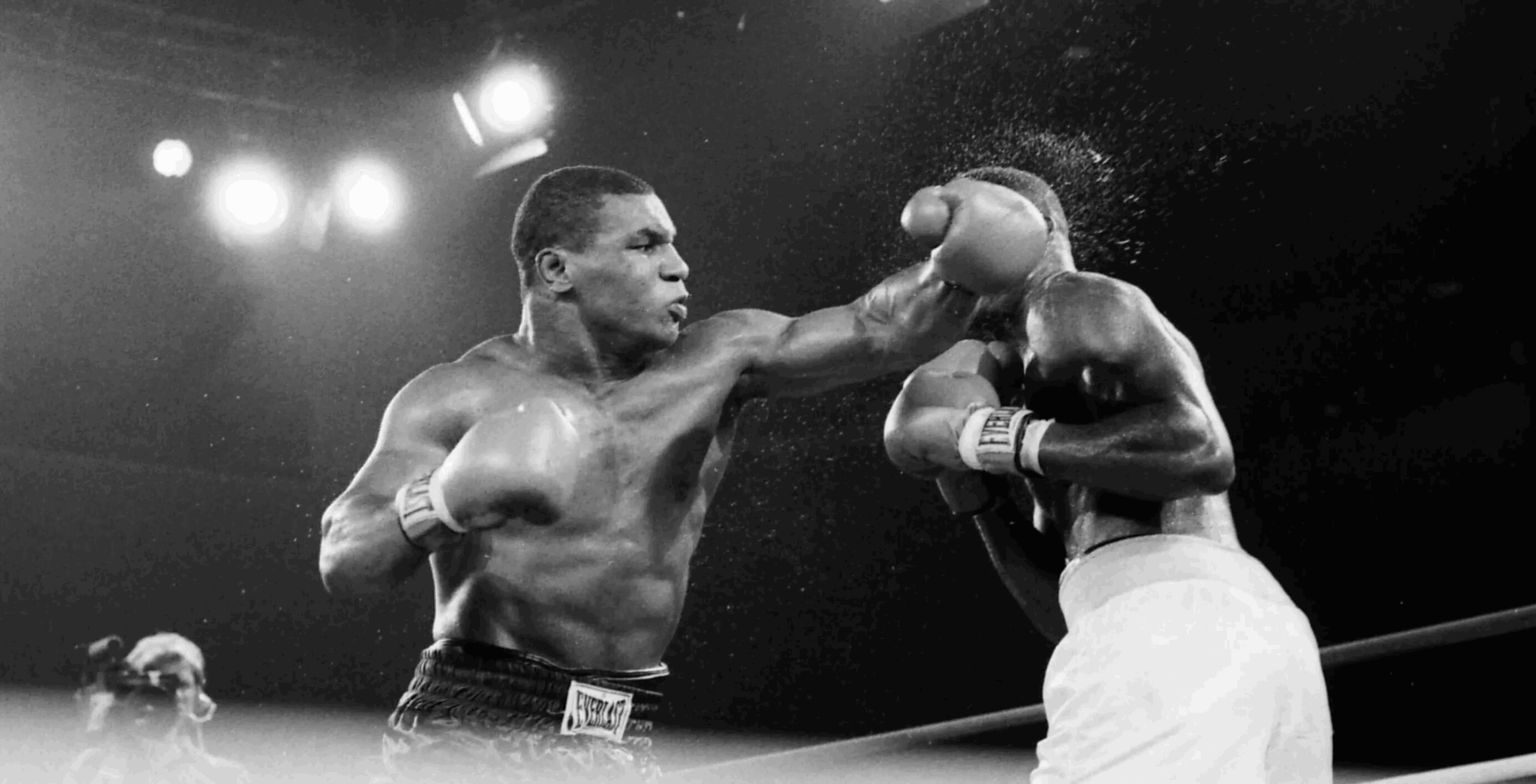
Behind the scenes, his development continued under the team built by Cus D’Amato. After Cus’s passing in November 1985, Tyson remained under the guidance of Kevin Rooney, a former protégé of D’Amato and a skilled trainer in his own right. Rooney helped preserve D’Amato’s trademark “peek-a-boo” style, which emphasized head movement, defensive discipline, and explosive counterpunching. Under Rooney’s mentorship, Tyson refined his already ferocious abilities into a well-rounded skill set that was nearly impossible to overcome.
Despite the emotional burden of losing his mentor, Tyson’s determination only intensified. Every victory in the ring was a tribute to D’Amato’s vision. The young fighter from Brownsville, once headed for a life of crime and obscurity, was now the talk of the boxing world. New York had given him his first stage—and the world was next.
Boxing Career (1985–2005)
1985-2005: Mike Tyson’s professional boxing career was full of highs and lows. Tyson’s exciting style, intimidating presence, and refusal to be intimidated inside the ring, riveted the fight fan’s imagination and attention. He emerged as one of the most famous athletes in history and a cultural icon. That fighting spirit lives strong in heavyweight boxing, dolor and disappointment not withstanding.
Becoming the Youngest Heavyweight Champion
Mike Tyson became the youngest heavyweight champion in history on November 22, 1986, when he was only 20 years and 4 months old. At the Hilton in Las Vegas, he faced Trevor Berbick for the World Boxing Council (WBC) title. Tyson entered the bout with an imposing 27-0 record, including 25 knockouts. Fans worldwide were eager to see whether he could deliver on the enormous hype—and he did, with speed and brutality.

Tyson dominated the fight from the opening bell. The reigning champion, Berbick, struggled to handle Tyson’s:
- Blistering hand speed
- Raw knockout power
- Relentless forward pressure
- Explosive combinations, especially the left hook
Midway through the second round, Tyson landed a devastating left hook that staggered Berbick. The champion tried to regain his footing but collapsed twice more before the referee stopped the fight. The outcome was decisive: Mike Tyson was crowned the youngest-ever WBC Heavyweight Champion.
This victory made Tyson an overnight global sensation. It marked the beginning of a legendary championship reign and permanently secured his place in boxing history.
Key Fights and Victories
Following his victory over Berbick, Tyson set his sights on unifying the heavyweight division. Over the next two years, he would defeat other major titleholders, becoming the undisputed heavyweight champion. His fights were not only victories—they were spectacles, showcasing a level of dominance rarely seen in the sport. Tyson’s blend of raw power, speed, and defensive skill allowed him to dismantle seasoned opponents in astonishing fashion.
In 1987, Tyson added the World Boxing Association (WBA) and International Boxing Federation (IBF) titles to his collection after defeating James “Bonecrusher” Smith and Tony Tucker, respectively. With all three major belts in his possession, he was officially recognized as the undisputed heavyweight champion of the world.

His title defenses throughout the late 1980s were equally impressive. He knocked out challengers like Pinklon Thomas, Tyrell Biggs, and Michael Spinks—all formidable opponents who failed to survive Tyson’s early-round assaults.
Win Over Trevor Berbick (1986)
Tyson’s victory over Trevor Berbick is perhaps his most historically significant fight. Not only did it make him the youngest heavyweight champion, but it also marked the passing of the torch in the heavyweight division. Berbick, a seasoned fighter who had previously defeated Muhammad Ali, was no match for Tyson’s fury.
From the first round, Tyson’s uppercuts and left hooks shook Berbick. The champion attempted to clinch and retreat, but Tyson relentlessly cut off the ring and punished him with body shots and head combinations. In the second round, a final devastating left hook sent Berbick crashing to the canvas. He rose—only to stumble and fall again before collapsing into the ropes. The referee waved the fight off, and Tyson stood victorious, making history in dramatic fashion.
Victory Over Larry Holmes (1988)
On January 22, 1988, Mike Tyson faced Larry Holmes—former heavyweight champion and one of the last men to defeat Muhammad Ali in a title bout. Holmes had come out of retirement for this match, and though he was older and past his prime, his experience and ring IQ made him a respected challenger.
The bout was billed as a clash of generations. Holmes, once the king of the heavyweight division, faced a younger, more powerful Tyson who was at the peak of his abilities. From the opening round, Tyson controlled the pace, attacking with brutal body shots and quick combinations. Holmes attempted to use his jab and movement to create space, but Tyson closed the distance quickly and punished him at every turn.
In the fourth round, Tyson knocked Holmes down three times, triggering the three-knockdown rule. With the crowd roaring, Tyson celebrated another dominant win, and many boxing experts hailed it as a symbolic passing of the guard—from the era of Ali and Holmes to the new age of Tyson.
Personal Struggles and Comebacks
Mike Tyson’s ferocious success was not only ·”Inside the ring, Tyson was the untouchable a product of his incredibly rough-and-tumble upbringing but also something he worked for every day. The troubles beyond the ropes mounted with his fame. Tysons personal life was the subject of popular press coverage that included stories about failed relationships, money troubles and unstable emotions. His life, from boxing hero to convicted felon to his final years back in the sport, tells a complicated story of a man constantly at war with his own demons.
Legal Troubles and Time in Prison
One of the most defining—and darkest—chapters in Tyson’s life came in 1992, when he was convicted of rape. The charge stemmed from an incident involving Desiree Washington, an 18-year-old Miss Black America contestant. Tyson was found guilty and sentenced to six years in prison, ultimately serving three years before being released on parole in 1995.
This period marked a dramatic fall from grace. At the time of his conviction, Tyson was still one of the most recognizable and highest-paid athletes in the world. His incarceration halted a flourishing career and permanently damaged his public image. Tyson maintained his innocence throughout the trial and prison term, but the conviction remains a controversial and pivotal point in his life story.
While behind bars, Tyson spent time reading philosophy and religion, particularly Islamic teachings, and converted to Islam. He adopted the name Malik Abdul Aziz during his incarceration, though he would continue to be known as Mike Tyson in the public eye. Upon his release, there was uncertainty about whether the former champion could—or should—return to the ring.
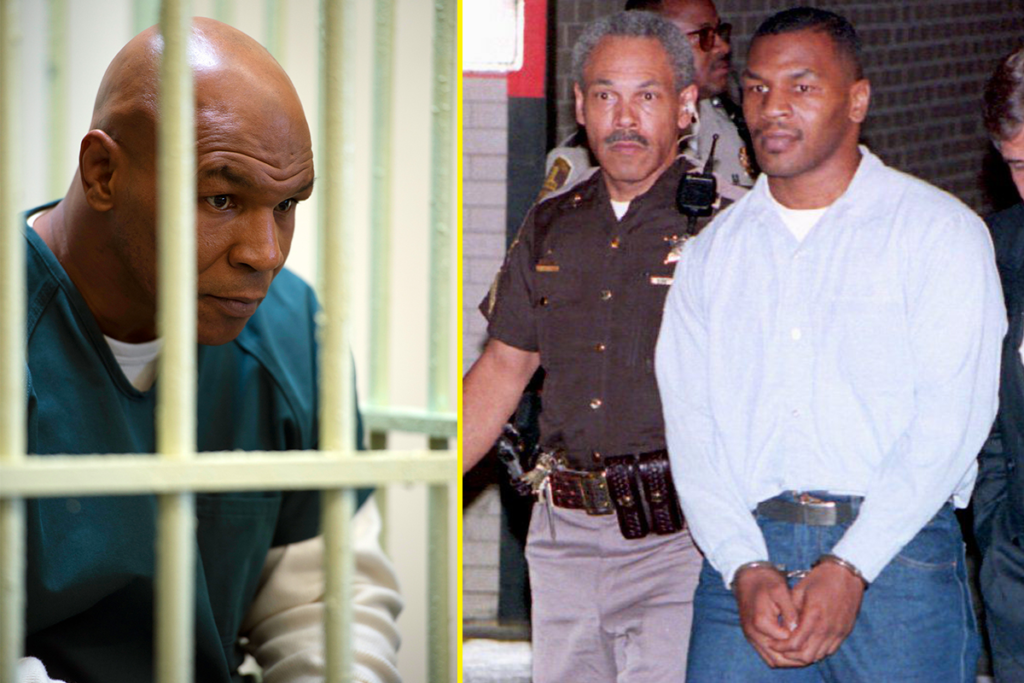
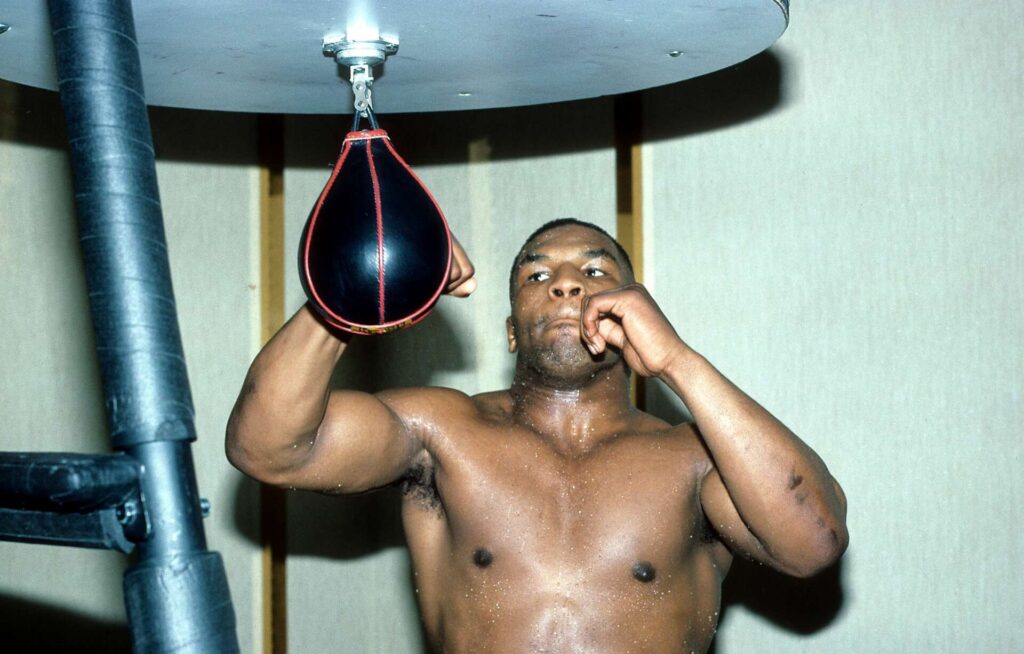
Return to Boxing and Later Career
Tyson’s release from prison in 1995 sparked a media frenzy. Many wondered if he could reclaim his former glory. He returned to the ring in August of that year, defeating Peter McNeeley in a highly publicized bout that lasted only 89 seconds. The win rekindled interest in Tyson as a box office sensation, and he quickly resumed his pursuit of the heavyweight title.
In 1996, Tyson reclaimed the WBC and WBA titles by defeating Frank Bruno and Bruce Seldon, respectively. However, his career soon took another dramatic turn. In 1997, during a rematch with Evander Holyfield—who had previously defeated him—Tyson was disqualified for biting a piece off Holyfield’s ear. The incident shocked the sports world and led to a temporary revocation of Tyson’s boxing license, further staining his reputation.
Despite the controversies, Tyson continued to fight sporadically into the early 2000s. He faced a series of defeats, most notably against Lennox Lewis in 2002, where he was knocked out in the eighth round. By then, it was clear that Tyson was no longer the unstoppable force he once was. Age, personal issues, and years of physical and emotional exhaustion had taken their toll.
His final professional fight occurred on June 11, 2005, against Kevin McBride. Tyson quit on his stool after the sixth round, announcing afterward that he no longer had the drive to compete. The once-feared champion left the sport on a quiet and somber note, ending a career that had begun with so much promise and dominance.
Though his later career never matched the brilliance of his early years, Tyson’s comeback efforts reflected a deeper human story—of a man seeking redemption, battling inner chaos, and confronting the consequences of his actions. His legacy, shaped as much by defeat and controversy as by victory, remains one of the most complex and captivating in sports history.
Retirement and Legacy
One of the most remarkable, turbulent and iconic careers in the history of boxing ended in 2005 as Mike Tyson retired from the sport. Tyson’s impact wasn’t just about titles and knockouts, it was about breaking records and making headlines, winning the fight between whomever he was fighting and himself. It is a tale of transformation, tragedy, redemption and the enduring mystique of a man who once reinvented the heavyweight division.
Reasons for Retirement in 2005
Tyson’s final bout came on June 11, 2005, against Kevin McBride at the MCI Center in Washington, D.C. At 38 years old, Tyson was a shadow of the fighter who had once ruled the boxing world. Entering the ring with physical wear and psychological exhaustion, he lacked the fierce energy and motivation that had once defined his style.
Despite landing several solid punches early in the fight, Tyson faded quickly. After the sixth round, he sat on his stool and refused to continue, shocking fans and commentators. In the post-fight interview, he admitted, “I don’t have the guts to be in this sport anymore. I don’t want to disrespect the sport I love.”
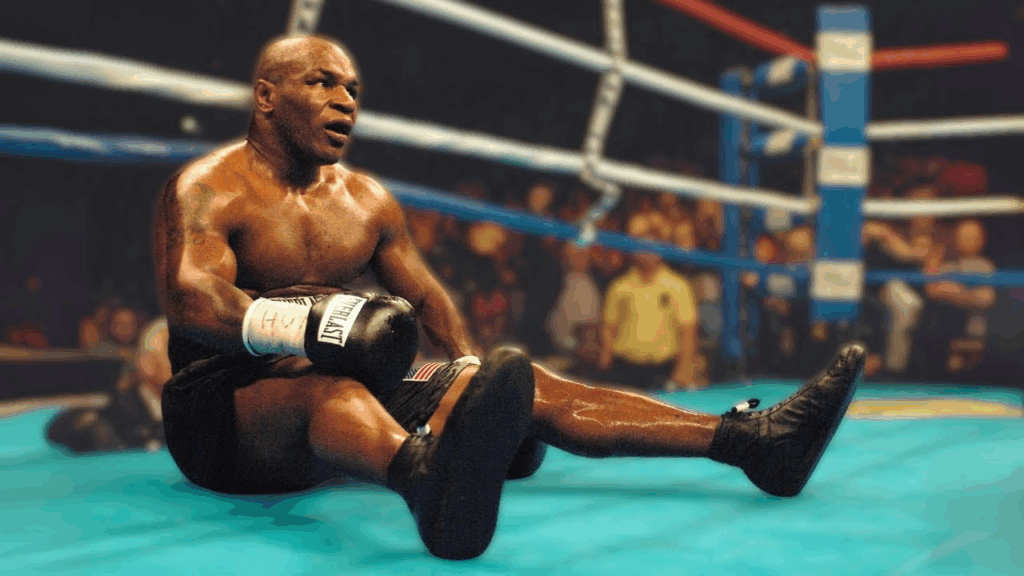
His decision wasn’t just about a single loss—it was the culmination of years of physical decline, mental fatigue, financial difficulties, and a changing landscape in heavyweight boxing. The hunger and rage that had once driven him were gone. Retirement, for Tyson, was not just an end to his athletic career—it was an escape from the endless cycle of pressure, expectation, and personal chaos.
Lasting Impact on Boxing
Mike Tyson’s impact on the sport of boxing is profound and lasting. He wasn’t just a champion—he was a cultural phenomenon. His rise in the 1980s brought a level of attention to the heavyweight division not seen since the days of Muhammad Ali. Tyson made boxing relevant to a new generation, drawing massive pay-per-view audiences and global media coverage.
His in-ring style—ferocious, fast, and explosive—set a new standard for what a heavyweight could be. Unlike traditional heavyweights who relied on reach and pacing, Tyson fought with the aggression of a middleweight and the power of a super heavyweight. His “peek-a-boo” technique, head movement, and combination punching became a model for aspiring fighters around the world.

Beyond the technical, Tyson’s persona transcended sports. He was a pop culture icon—appearing in video games, music videos, and films. Even his setbacks, such as his prison sentence and the infamous ear-biting incident, became part of the public narrative that kept people watching, debating, and speculating.
Today, Tyson’s influence can still be seen in how fighters are marketed, how matches are promoted, and how the public relates to athletes with complex personal lives. His life story has been the subject of books, documentaries, and a successful one-man Broadway show. His transformation from feared athlete to introspective, sometimes humorous media personality—especially in his later ventures like podcasting and cannabis entrepreneurship—has added depth to his legacy.
Ultimately, Mike Tyson will be remembered not just for what he did in the ring, but for how his story captured the imagination of millions. He symbolized both the raw power of human potential and the fragility of fame. His legacy endures as a cautionary tale, a redemption arc, and an enduring legend in the annals of boxing history.
All site news
Mike Tyson: Stats, Achievements, and Career Highlights
Mike Tyson’s career is a catalog of moments which transcended what was considered possible in heavyweight boxing. It was not just that he won titles — he shattered records and…
Read MoreMike Tyson: Future Plans and Legacy
Tyson’s Continued Influence on Boxing Even decades after his prime, Tyson’s influence remains strong within the boxing world. His aggressive style, psychological warfare, and …
Read MoreMike Tyson’s Personal Life and Interests
Relationship with His Mother and Mentorship from Cus D’Amato Tyson’s relationship with his mother, Lorna, was emotionally complex. She struggled to provide for the family and …
Read MoreMike Tyson: Achievements and Milestones
Tyson’s Undefeated Streak Before His Loss to Buster Douglas Before his shocking upset loss to James “Buster” Douglas in 1990, Tyson had built one of the most intimidating and …
Read MoreMike Tyson Fighting Style and Strengths
Unmatched Power and Speed Tyson’s physical gifts were almost unmatched in his era. His rare combination of hand speed, explosive power, and compact build made him a unique for…
Read MoreMike Tyson’s Boxing Career
Mike Tyson’s ascent to the top of the boxing world was marked by a number of critical fights and memorable performances. The first one was only an appetizer: After he won the …
Read More